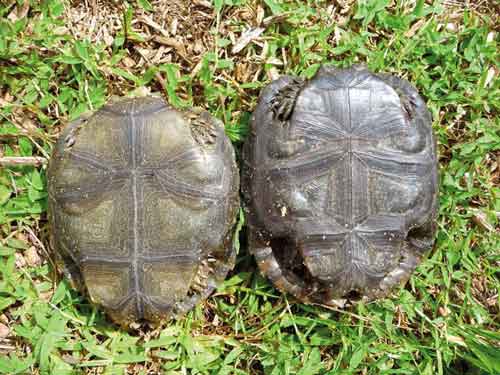Type the name of the breed you're looking for below
[wpdreams_ajaxsearchlite] Don't see the breed your're looking for? Click here and let us know!
Burmese Brown Tortoise
| Place of Origin and Range | This species is found from India and Bangladesh in the north, south to Malaysia, and parts of Borneo and Sumatra. |
| Description | With a darker overall pattern comprised of tan, brown and black colouration. The common name of “six-legged tortoise” refers to several protuberant scales that may develop on the hind legs of adults, giving the appearance of a more complex limb system than is actually present. |
| Morph Patterns Available | Yes |
| Adult Size | Can grow up to 16in(40cm) |
| Accommodation | They require large enclosures, temperatures above 60 °F (16 °C), and bedding composed of grasses or grass-based hay. Due to their high dietary fibre needs, grasses form a minimum of 75% of their food intake. Including large amounts of clean, fresh water. |
| Lifespan | Can live up to 10 years |
| Feeding / Diet | Diet consists mainly of romaine lettuce, greens(dandelion, turnip, mustard and collard), fruit or tortoise chow. The food should occasionally be supplemented with calcium D3 and additives. |
| Other Considerations | Watch for theses health concerns carefully with your tortoise. Vitamin A Deficiency: Vitamin A is an important nutrient for your tortoise’s health. It is found in his diet in the form of leafy green, orange or yellow vegetables, liver, and fish. If your tortoise is not getting enough Vitamin A, he can suffer serious health problems. Always check to make sure that your tortoise does not have swollen eyelids, as this is the main sign of a Vitamin A deficiency. Also, check for weight loss, nasal discharge and infected skin. Any of these symptoms could point to a deficiency. If you think your tortoise may not be getting enough Vitamin A, you should take him to the veterinarian to get a firm diagnosis. Shell Problems: Your tortoise's shell is very important to his overall health. There are many potential problems that could occur, so you should be on the lookout at all times. Respiratory Disease: Respiratory infections have symptoms similar to vitamin A deficiency, including swollen eyelids and runny nose, so you should take your tortoise to the veterinarian to get a proper diagnosis if you suspect either. More serious infections will be characterized by breathing through the mouth, mucus in the mouth, and wheezing. Always make sure your tortoise’s environment has the proper amount of humidity, as this will help prevent respiratory problems. |



